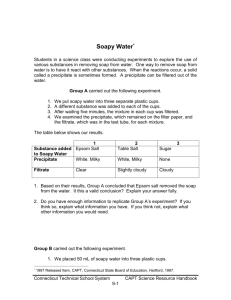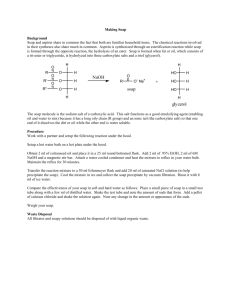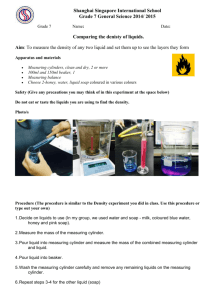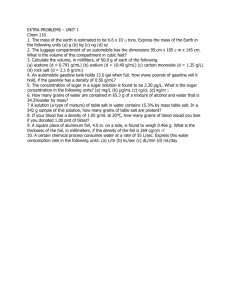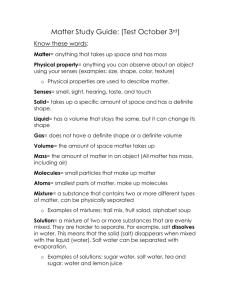Soapy water lab report
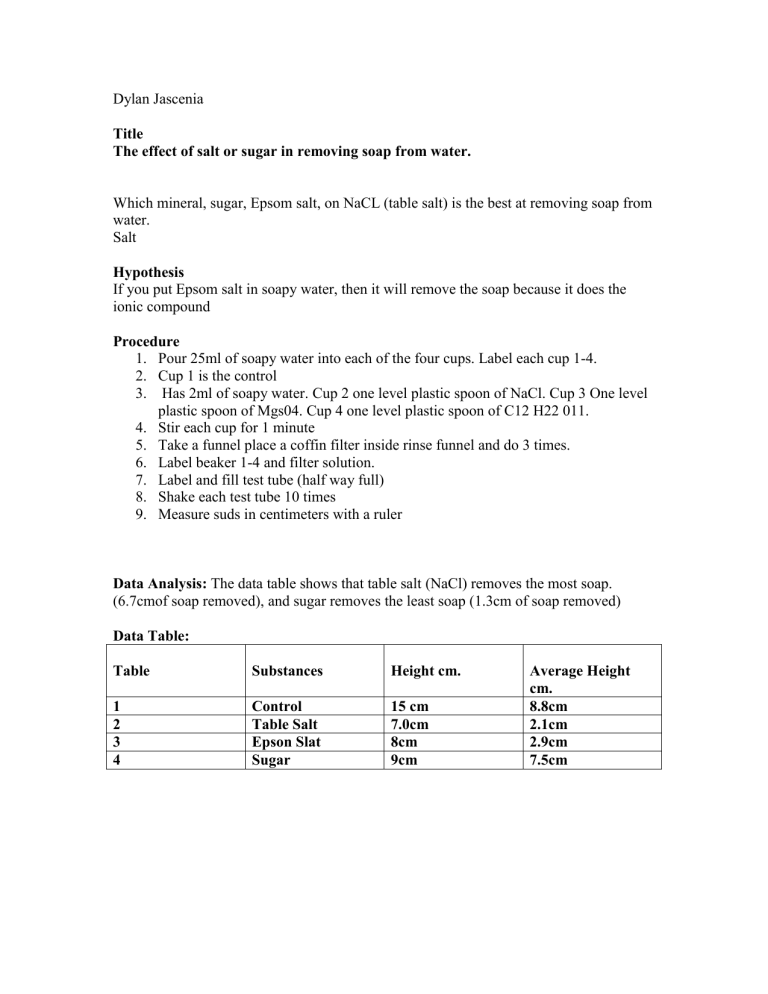
2
3
4
Dylan Jascenia
Title
The effect of salt or sugar in removing soap from water.
Which mineral, sugar, Epsom salt, on NaCL (table salt) is the best at removing soap from water.
Salt
Hypothesis
If you put Epsom salt in soapy water, then it will remove the soap because it does the ionic compound
Procedure
1.
Pour 25ml of soapy water into each of the four cups. Label each cup 1-4.
2.
Cup 1 is the control
3.
Has 2ml of soapy water. Cup 2 one level plastic spoon of NaCl. Cup 3 One level plastic spoon of Mgs04. Cup 4 one level plastic spoon of C12 H22 011.
4.
Stir each cup for 1 minute
5.
Take a funnel place a coffin filter inside rinse funnel and do 3 times.
6.
Label beaker 1-4 and filter solution.
7.
Label and fill test tube (half way full)
8.
Shake each test tube 10 times
9.
Measure suds in centimeters with a ruler
Data Analysis: The data table shows that table salt (NaCl) removes the most soap.
(6.7cmof soap removed), and sugar removes the least soap (1.3cm of soap removed)
Data Table:
Table
1
Substances
Control
Height cm.
15 cm
Average Height cm.
8.8cm
Table Salt
Epson Slat
Sugar
7.0cm
8cm
9cm
2.1cm
2.9cm
7.5cm
The Effect of Substances on Soapy Water
16
14
12
10
8
6
4
Height
Average Height
2
0
Control Table Salt Epson Slat Sugar
Conclusion: The purpose of this lab was to decide which mineral sugar, Epsom salt, or table salt. The hypothesis was, if you put Epsom salt in soapy water, then it will remove the soap because it does the ionic compound
The data did not support my hypothesis. The data shows that table salt (NaCl) removes the most soap. (6.7cmof soap removed), and sugar removes the least soap (1.3cm of soap removed). In conclusion NaCl removed the most soap. To ensure that the results would be correct only the substances added to the soapy water were changed. The control was soapy water with nothing added to it. The class did five trials and the class averages were calculated, to ensure accuracy. Overall the data from the multiple trials agreed. There were some minor disagreements, but it did not affect the class average or the validity of the data. Some errors that occurred were some water spilled out of the beaker; and it was difficult to measure the suds in the beaker. Changes that could have been made were to have a way to ensure better measuring. Like putting the ruler into the beaker.
